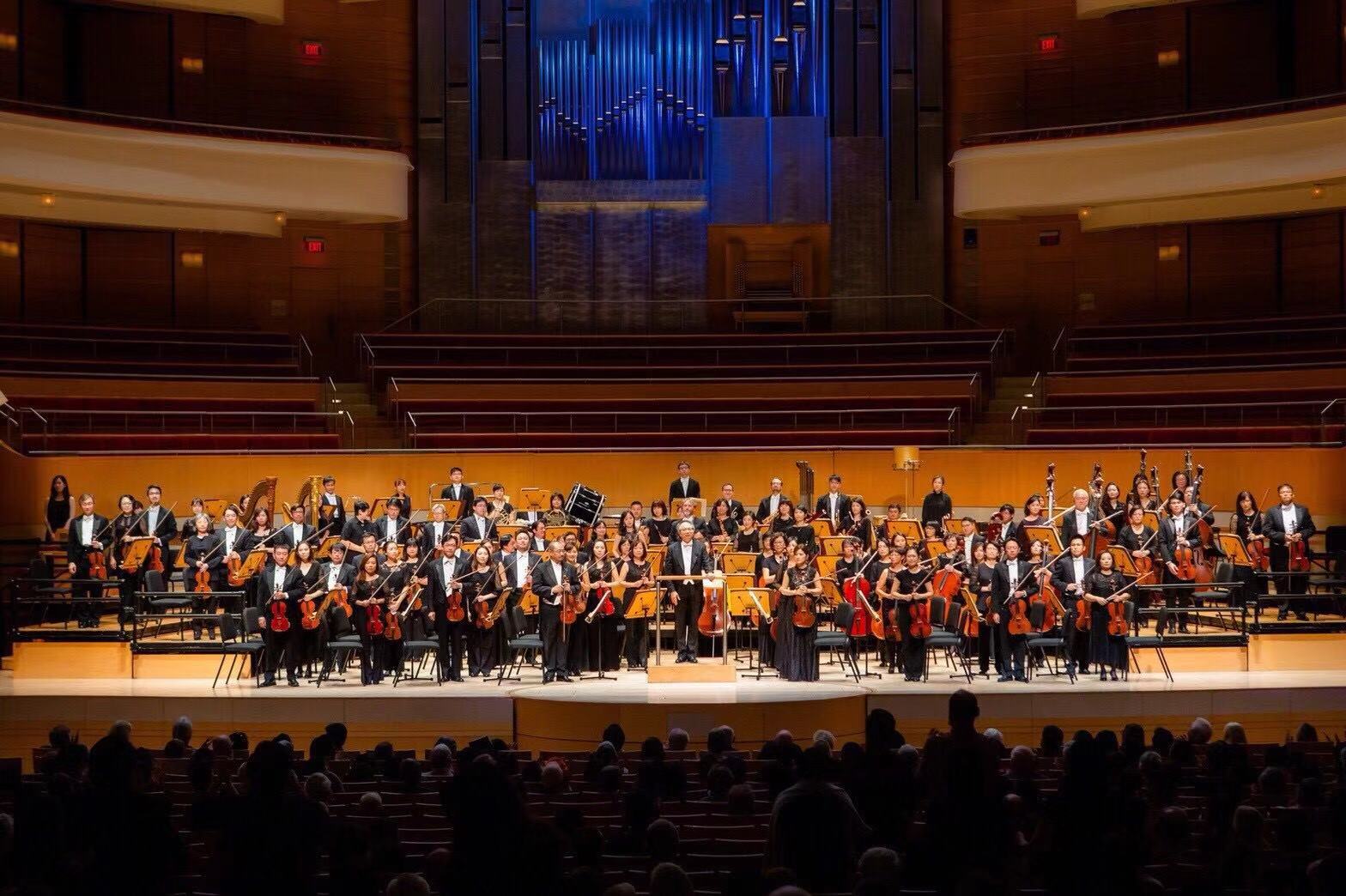Back by Popular Demand, Taiwan Philharmonic Shows its French Colors
/By Truman C. Wang
11/1/2018
Photo credit: Yungnien Wang
Tuesday night’s concert by the Taiwan Philharmonic, its second visit since 2016, continued the excellent series of great orchestras this PSOC season that opened with the Philharmonia Baroque, followed by the Mariinsky Orchestra. The Renée and Henry Segerstrom Concert Hall, with its relatively modest seating capacity of 1,700, affords a more intimate musical experience and immediacy of sound than, say, a larger hall like the Disney, with 2,265 seats. The tiered horseshoe shape of the Segerstrom auditorium is a nod to the old, acoustically fabulous opera houses of Italy, with an inevitable modern concession to the democratic open stage design (which some feel gives concession also to perfect acoustics.) The sonic advantage of the smaller hall was clear in last Friday’s Bernstein concert – where the choral finale registered a tremendous visceral and emotional impact – and in last night’s Taiwan Philharmonic’s French pieces – where colors ‘popped’ and atmosphere intensified. More about that later.
The concert opened with Gordon Chin’s ‘Dancing Song’ – the last of his Three Aboriginal Songs for Orchestra. Chin, a prolific Taiwanese composer born in 1957, draws his inspiration from folk music but, like Bartók, often emulates the tunes without directly quoting them. Employing a large orchestra, this short piece aptly demonstrated the Taiwanese orchestra’s athletic brass and percussion, and warm, shiny strings.
Liszt’s E-flat Piano Concerto No. 1 is traditionally the domain of top-tier orchestras and pianists, for whom the devilish difficulties hold no terror. In this performance, the orchestra was the Yin to the pianist’s Yang. Stephen Hough’s playing was full-blooded, passionate with a devil-may-care attitude that sometimes got him into trouble (granted, I wasn’t expecting a note-perfect Richter, but I was expecting more.) Mr. Hough’s Steinway was also a formidable instrument, producing big, clear, full-bodied sounds that one could have mistaken for a Bösendorfer. This was in contrast to the orchestra’s mellower, softer hues with flashes of brilliance and wonderful contributions from the clarinet, harp and cello. Somehow, the Yin and the Yang came together in perfect harmony in the Allegro marziale, where conductor Shao-Chia Lü and Mr. Hough showed great rapport – the piano blending magically with the scintillating triangle, such that the two sounds became indistinguishable – before the heart-stopping octaves in the final cadenza and both racing off to the brilliant finish.
Debussy’s La Mer and Ravel’s Daphnis et Chloé, Suite 2 made up the second half of the program. I am lumping them both together because they share the same fundamental structure despite being of different musical tapestries – one oceanic, the other mythological. The Taiwan Philharmonic showed a natural affinity for French Impressionism, in a sea journey full of light, waves and magical vistas (picture Images, Book 1 but on a much larger scale), or in a mythical world of Daphnis et Chloé filled with rapture and sensuous enchantment. The winds sounded lovely throughout – the lively daybreak and birdcalls in ‘Lever du jour’, the poetic flute in ‘Pantomime’, the seductive oboe in ‘Dialogue du vent et de la mer’. The harp, horns and cellos all made eloquent contributions. Like a sorcerer playing with colors, Mr Lü conjured up the vast immensity of the ocean (La mer) and the enchanted euphoria of love (Daphnis), finally ending both pieces in a thrilling dance and blazing excitement.
A special encore, Tyzen Hsiao’s folk-inspired The Angel from Formosa, would have been familiar to the So Cal Taiwanese community that turned out in droves to the concert. It started off softly on the flute, then the oboe, then blossomed into the most velvet, radiant strings heard all evening, carrying with it deep nostalgia, determination, but no tears.
Truman C. Wang is Editor-in-Chief of Classical Voice, whose articles have appeared in the Pasadena Star-News, San Gabriel Valley Tribune, other Southern California publications, as well as the Hawaiian Chinese Daily. He studied Integrative Biology and Music at U.C. Berkeley.




